By Steve Meacham
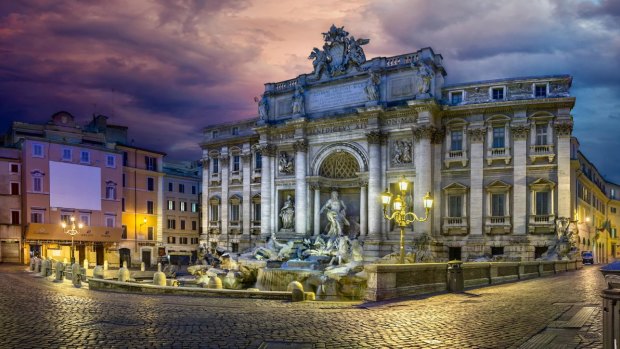
Trevi Fountain.Credit: Alamy
According to ancient legend, the La Bocca della Verita – the Mouth of Truth – is pretty intolerant of liars.
Anyone who sticks an arm into the mouth of the circular sculpture and swears falsely has their hand bitten off instantly.
There's no way I'm going to do it.
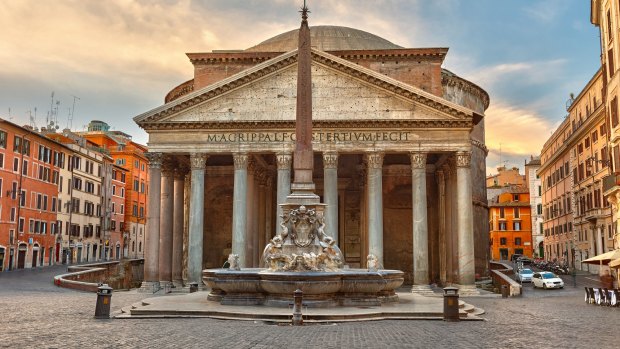
Pantheon in Rome, Italy.Credit: Alamy
Not because I'm untruthful, but because there's a line of roughly 150 tourists outside Rome's Basilica of Santa Maria, in Cosmedin, waiting to be photographed with their hand in the Mouth.
They're not exactly at risk. In its entire history, the Mouth – probably a monumental drain cover from the days of the Roman Empire – has never severed anyone's hand. Which means the people of Rome are either extraordinarily honest, or that the Mouth's judgmental powers are a little overrated.
So why are so many 21st-century tourists queuing up for a photograph?
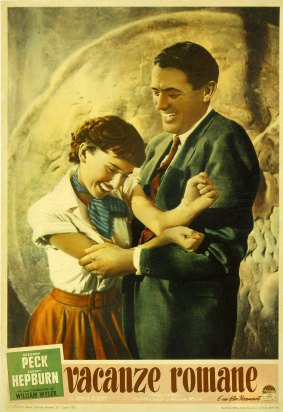
An Italian poster for Roman Holiday, starring Audrey Hepburn and Gregory Peck. Credit: Getty Images
Because they've all seen the scene in Roman Holiday where Gregory Peck (as gossip journalist "Joe") pretends to lose his hand in La Bocca, much to the consternation of Audrey Hepburn (as the incognito princess "Anya").
It's one of the great scenes of romcom cinema, made all the more charming because Hepburn's shock was apparently genuine. Peck hadn't told her what he was going to do (withdraw his hand into his suit jacket to make it look as if it had been bitten off).
Roman Holiday, which won Hepburn an Oscar and made her a superstar, was given a significant reboot in 2015 when it featured prominently in Trumbo. Starring Bryan Cranston as the blacklisted communist screenwriter Dalton Trumbo, the Oscar-nominated movie shows how Trumbo wrote Roman Holiday under a pseudonym, having been banned by the infamous House Un-American Activities Committee.
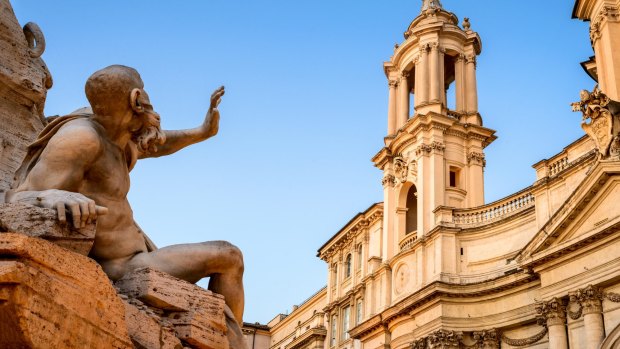
Piazza Navona with the Fountain of the four Rivers.Credit: Alamy
Like New York, London, Paris and LA, Rome itself is a genuine film star – the setting for hundreds of movies, covering more than 2000 years of history.
And yet most of its most celebrated locations can be seen, free, on a simple stroll of central Rome, backed up (if you have time) with a Cinecitta visit, which involves a 40-minute metro ride.
Where to start the walking tour? Obviously, something that has been the scene of two of the most memorable scenes in popular cinema.
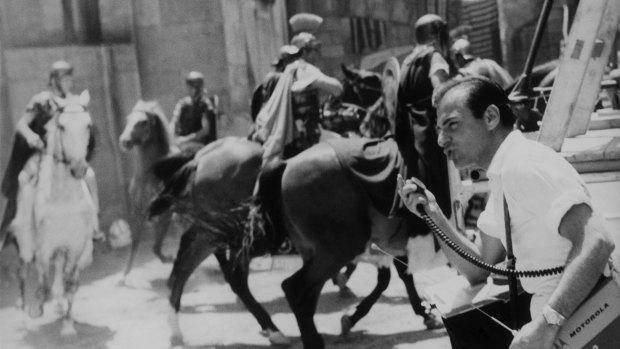
Shooting Ben Hur in the Cinecitta film studios.Credit: Getty Images
The Trevi Fountain
Three Coins In The Fountain (1954) is best remembered for its Oscar-winning theme song sung by an uncredited Frank Sinatra. It was made at the beginning of the so-called "Hollywood on the Tiber" phase, which stretched from Quo Vadis (1951) to The Agony and the Ecstasy (1965), when Italy offered massive tax advantages to overseas filmmakers.
The plot revolves around three female American secretaries, all searching for love. Two throw coins into the Trevi Fountain at the beginning of the movie, following the myth that whoever does so will return to Rome. By the end, all three have tossed their coins and are reunited at the Trevi Fountain with their future husbands.
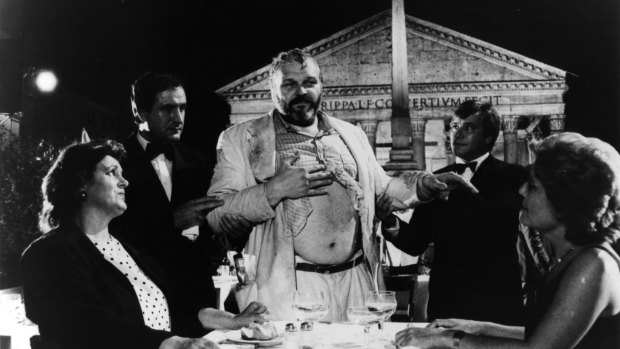
Brian Dennehy on the set of The Belly of an Architect.Credit: Getty Images
The Baroque La Fontana di Trevi – designed by Roman architect Nicola Salvi and commissioned by Pope Clement XII in 1730 – took 30 years to build and is fed by the Acqua Vergine, a reconstructed version of an original Roman aqueduct.
It features in many other movies, including Roman Holiday and Woody Allen's 2012 film To Rome With Love (financed by Italy on condition he shot it in Rome – the title came afterwards).
However, the most famous scene featuring the fountain is Federico Fellini's masterpiece La Dolce Vita, which won the Palme d'Or at the 1960 Cannes Film Festival.
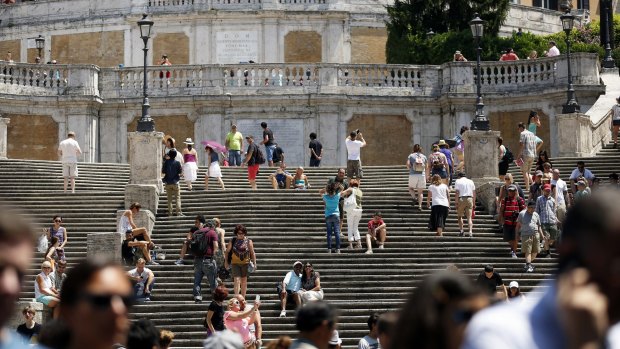
Pedestrians walk past the Spanish Steps in Rome.Credit: Bloomberg
Most of La Dolce Vita was shot at Fellini's favourite Studio 5 at Cinecitta where he recreated Roman landmarks such as the Via Veneto and the dome of St Peter's.
But the scene where Marcello Mastroianni (as the hedonist journalist) and Anita Ekberg (as the visiting American actress) wade into the fountain was filmed in winter at the actual location.
It took a week to shoot. According to Fellini, the Swedish Ekberg stood in the cold water for hours in her flimsy dress while Mastroianni wore a wetsuit beneath his outfit and "was completely pissed" on a bottle of vodka before the scene could be completed.
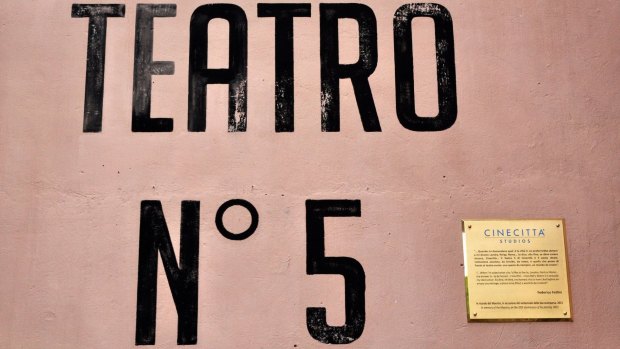
Pavilion number 5, Cinecitta, where Federico Fellini worked.Credit: Alamy
The Spanish Steps
Again, the most famous scene set here appears in Roman Holiday, introducing Europe to a generation of Americans who were soon to be taking advantage of the Jet Age.
In the movie, Hepburn's character was staying at 51 Via Margutta (the street where Fellini lived in real life) and Peck – now realising she is a princess on the run – contrives to bump into her on the Steps as she's buying a gelato. He then offers to show her Rome on a Vespa.
Known in Italian as Scalinate di Trinita dei Monti and one of the most favourite meeting places in Rome, the 135 steps were built between in 1723-1725.
They have also appeared in Bernardo Bertolucci's Besieged (released in 1999 and filmed at 8 Vicolo del Borttino, an abandoned villa with a view of the steps), The Man From UNCLE (2015) and The Talented Mr Ripley.
Piazza Navona
Ripley, Anthony Minghella's 1999 multi-Oscar-winning adaption of Patricia Highsmith's psychological thriller, is set mainly in Rome. Matt Damon as Ripley eventually kills his rich acquaintance Dickie (Jude Law) and assumes his identity.
The most haunting scene is when the psychopathic Ripley/Dickie accompanies a rich heiress (Cate Blanchett) across Piazza Navona and says: "I've never been happier. I feel like I have been handed a new life."
Built on the site of a Roman sports stadium, this incredible restaurant-lined rectangle is a Baroque masterpiece, combining some of the world's most impressive fountains and a parade of street artists.
The Pantheon
Peter Greenaway's 1987 film The Belly of an Architect is a visual hymn to Rome's significance in world architecture.
A modern American architect (played by Brian Dennehy) arrives in Rome with his much younger wife to create an exhibition dedicated to a little-remembered Italian architect. Then he becomes obsessed with the parallels between his life and that of Caesar Augustus (who may/may not have been poisoned by his younger wife).
The most memorable scene is when the American announces his new project in front of the Pantheon. Not ambitious or vain, then?
The Pantheon is almost 2000 years old. Dedicated by the Emperor Hadrian in AD128, it's on the site of a previous temple commissioned when Augustus was still alive – about 30 years before Christ was born.
Even now, the Pantheon (a temple dedicated to "every God") remains the largest dome in the world that has not been reinforced by concrete, and a massive influence on such architects as Michelangelo and Sir Christopher Wren.
Cinecitta
Pronounced "Chinny-sita", this is the most celebrated film studio in Italy – the equivalent of Universal or 20th Century Fox in Hollywood, but with a Fascist spin.
It is incredibly easy to visit. Take Rome's Metro A line (via Termini, the central rail station) towards Anagnina, with Cinecitta the penultimate stop. Walk up the stairs – and that Mussolini-era building on your left is the entrance to the studio. Some of the most glamorous stars in world cinema have passed through these gates.
Here you can choose just to visit the museum buildings, or pay extra to visit the back lot. Unless you're really pressed for time, wait for (or pre-book) an English-language back-lot tour.
"Il Duce" founded Cinecitta in 1936, with his son Vittorio and their head of cinema, Luigi Freddi. In Nazi Germany, Goebbels had already pioneered propaganda movies, and Mussolini's slogan for Cinecitta was: "Cinema is the most powerful weapon".
One of the first movies shot here was the Roman Empire-era epic Scipio Africanus, about the general who defeated Hannibal. Some 7000 extras (many of them members of Mussolini's army) took part in the filming, along with 50 imported elephants and "thousands" of horses.
You can see this part of the studio's history in the building dedicated to Fellini, who won five Oscars in his 23-film career and was so wrapped up in filming that he slept at Cinecitta while shooting.
During the Allied bombing of Rome in World War II, the studios were partly destroyed, then used as an international refugee camp.
In the 1950s and '70s, Cinecitta became the studio of choice for large-scale American productions – many of them "sandal and sword" epics such as Quo Vadis, Ben Hur, Ulysses, Hercules and Cleopatra. More than 250 major films were shot here – about 60 inspired by Greek mythology or the Bible, and another 40 set in the days of the Roman Empire.
This story is wonderfully told in the second museum building, which includes costumes worn by Elizabeth Taylor in Cleopatra, Peter Ustinov as Nero in Quo Vadis and Richard Burton in Shakespeare's The Taming of the Shrew.
There are also rooms dedicated to Italy's movie divas (Sophia Loren, Gina Lollobrigida, Claudia Cardinale etc) and Sergio Leone's "spaghetti westerns" (Clint Eastwood in A Fistful of Dollars, Franco Nero in Django).
Go backstage and you can see the massive open-air pool that was the setting for both the naval battle in Ben Hur and the Himalayan base camp in the 2015 film Everest; the wooden buildings where Martin Scorsese filmed Gangs of New York; and the permanent recreation of the ancient forum and temples where the BBC-HBO TV series Rome was filmed.
TRIP NOTES
MORE INFORMATION
GETTING THERE
Emirates/Qantas operate daily flights from Sydney and Melbourne to Rome and Venice via Dubai.
TRAVELLING THERE
Rome is included on a 12-day Ultimate Italy trip by Luxury Gold by Insight Vacations from $7325 a person. It includes accommodation, six evening meals including a Michelin-starred dinner on the Isle of Capri, a Tuscan cooking demonstration, an exclusive behind-the-scenes visit to the Uffizi Gallery's private Vasari Corridor in Florence, and access to the Vatican's Sistine Chapel before it opens to the public. See insightvacations.com/luxurygold
Steve Meacham travelled as a guest of Insight Vacations.
Sign up for the Traveller Deals newsletter
Get exclusive travel deals delivered straight to your inbox. Sign up now.